Even though the equity strategy team at UBS has downgraded U.S. equities to Neutral from Outperform, they remain very positive on large cap biotechnology names. Acknowledging in their recent report that the U.S. downgrade was as much a valuation call as anything, they also feel that there is a degree of event risk to U.S. stocks that may be less likely to affect the biotechnology sector.
Despite relative outperformance of the large cap biotech group over the past two years, the UBS team sees the new product cycles and attendant mid- to long-term growth as a strong basis for valuation. In fact, they note that valuation is currently at the low end of historical ranges. Here are the top large cap biotechnology stocks to buy from UBS.
Alexion Pharmaceuticals Inc. (NASDAQ: ALXN) has been on fire through the summer and continues to be a target of takeover rumors. While the company only has one drug on the market,�Soliris, which treats two rare diseases, big pharmaceutical companies may indeed have Alexion in their sights. The UBS price target for the stock is $126. The Thomson/First Call estimate is $122.
Top 10 Biotech Companies To Watch In Right Now: Fuse Science Inc (DROP.PK)
Fuse Science, Inc. ( Fuse Science), incorporated on September 21, 1988, is a consumer products holding company. The Company maintains the rights to sublingual and transdermal delivery systems for bioactive agents that can effectively encapsulate and charge many varying molecules in order to produce complete product formulations which can be consumed orally, applied topically or delivered otherwise sublingually or transdermally, thereby bypassing the gastrointestinal tract and entering the blood stream directly. The Fuse Science technology is designed to accelerate conveyance of medicines or nutrients relative to traditional pills and liquids and can enhance how consumers receive these products. In December 2012, the Company launched its initial DROP products, PowerFuse, an energy formulation in a concentrated drop and ElectroFuse, an electrolyte formula in a concentrated drop, online, with the expansion into targeted retail distribution channels.
The Compan y is developing formulations and devices, which are compatible with alternative delivery systems for energy, medicines, vitamins and minerals, among other bioactives. These alternative systems include, but are not limited to, sublingual, transdermal and buccal drug delivery methods. use Science has developed and continues to advance, in conjunction with its scientific team, sublingual and transdermal delivery systems for bioactives that can effectively encapsulate and charge varying molecules in order to produce product formulations which can be consumed orally, applied topically or otherwise delivered sublingually or transdermally, thereby bypassing the gastrointestinal tract and entering the blood stream directly. The delivery technology is consists of encapsulation vesicles and ion exchange permeation enhancers. This technology utilizes a gradient across the mucosa membrane to help deliver the bioactive more efficiently through the mucosa.
The Company
Top 10 Biotech Companies To Watch In Right Now: Algeta ASA (ALGETA)
Algeta ASA is a Norway-based biotechnology company engaged in the development of targeted cancer therapies based on its alpha-pharmaceutical platform. The Company�� principal product is Alpharadin for the treatment of bone metastases resulting from castration-resistant prostate cancer. The Company�� pipeline also includes Alpharadin for the treatment of bone metastases resulting from breast cancer, a combination of Alpharadin with Taxotere for the treatment of bone metastases resulting from prostate cancer and Thorium-227 showing various cancer indications. The Company develops Alpharadin in a development and marketing cooperation with Bayer Schering Pharma. Algeta ASA is active through the two wholly owned subsidiaries, Algeta Innovations AS and Algeta UK Limited. On April 12, 2012, the Company announced that it estabilished a subsidiary active in the United States, Algeta US.
Best Blue Chip Stocks To Own Right Now: Neoprobe Corporation(NEOP)
Neoprobe Corporation, a biomedical company, engages in the development and commercialization of precision diagnostics that enhance patient care and improve patient benefit. The company is developing and commercializing targeted agents aimed at the identification of occult (undetected) disease. Neoprobe?s two lead radiopharmaceutical agent platforms, Lymphoseek and RIGScan are intended to help surgeons better identify and treat certain types of cancer. Lymphoseek is a diagnostic imaging agent intended for radiolabeling and administration in radiodetection and visualization of the lymphatic system draining the region of injection for delineation of the lymphatic tissue; and RIGScan is an intraoperative biologic targeting agent consisting of a radiolabeled murine monoclonal antibody. The company has a biopharmaceutical development and supply agreement with Laureate Biopharmaceutical Services, Inc. to support the initial evaluation of the viability of the CC49 master working c ell bank, as well as the initial steps in re-validating the commercial production process for the biologic agent used in RIGScan CR. The company was founded in 1983 and is based in Dublin, Ohio.
Top 10 Biotech Companies To Watch In Right Now: RXi Pharmaceuticals Corp (RXII)
RXi Pharmaceuticals Corporation (RXi), incorporated on September 8, 2011, is a development-stage company. The Company is a biotechnology company focused on discovering, developing and commercializing therapies addressing medical needs using RNA interference (RNAi)-targeted technologies. As of July 12, 2012, RXi was focusing on its internal therapeutic development efforts in fibrosis. RXI-109 is its RNAi product candidate, which is a dermal anti-scarring therapy that targets connective tissue growth factor (CTGF). The Company�� therapeutic platform consists of two main components: RNAi Compounds (rxRNA) and Advanced Delivery Technologies. RNAi compounds include rxRNAori, rxRNAsolo and sd-rxRNA, or self-delivering RNA. On April 26, 2012, it completed the spin-off transaction from Galena Biopharma, Inc. (Galena).
In January 2011, the Company announced research results in collaboration with Generex Biotechnology Corporation, and RXi�� wholly owned subsidiary Antigen Express, Inc., in developing vaccine formulations for immunotherapy. In January 2011, it announced initial results as part of its collaboration with miRagen Therapeutics, Inc. in creating microRNA mimics, or artificial copies of microRNAs, using the Company�� sd-rxRNA technology. In February 2011, it announced the initiation of RXi�� development program for RXI-109.
Top 10 Biotech Companies To Watch In Right Now: Scancell Holdings PLC (SCLP)
Scancell Holdings PLC is a United Kingdom-based company. The Company�� principal activity of the consists of the discovery and development of monoclonal antibodies and vaccines for the treatment of cancer. In April 2012, the Company completed recruitment to the Phase 1 clinical trial of SCIBI. In May 2012, the Company commenced recruitment and treatment of the first patient in the second part of it Phase 1/2 clinical trial of SCIBI. The Phase 2 part of the trial is conducted in five United Kingdom centers in Nottingham, Manchester, Newcastle, Leeds, and Southampton. On August 15, 2012, the Company announced the development of a platform technology, Moditope.
Top 10 Biotech Companies To Watch In Right Now: Cannabis Science Inc (CBIS.PK)
Cannabis Science, Inc., incorporated on May 4, 2007, is a development-stage company. The Company is engaged in the creation of cannabis-based medicines, both with and without psychoactive properties, to treats disease and the symptoms of disease, as well as for general health maintenance. On February 9, 2012, the Company acquired GGECO University, Inc. (GGECO). On March 21, 2012, the Company acquired Cannabis Consulting Inc. (CCI Group).
The Company is engaged in medical marijuana research and development. The Company works with world authorities on phytocannabinoid science targeting critical illnesses, and adheres to scientific methodologies to develop, produce, and commercialize phytocannabinoid-based pharmaceutical products.
Top 10 Biotech Companies To Watch In Right Now: Gentium SpA(GENT)
Gentium S.p.A., a biopharmaceutical company, focuses on the development and manufacture of its primary product candidate, defibrotide, an investigational drug based on a mixture of single-stranded and double-stranded DNA extracted from pig intestines. It develops defibrotide for the treatment and prevention of hepatic veno-occlusive disease (VOD), a condition that occurs when veins in the liver are blocked as a result of cancer treatments, such as chemotherapy or radiation, that are administered prior to stem cell transplantation. The company has completed a Phase III clinical trial of defibrotide for the treatment of severe VOD in the United States, Canada, and Israel; and a Phase II/III pediatric trial in Europe for the prevention of VOD. It also offers sulglicotide that is developed from swine duodenum, and has ulcer healing and gastrointestinal protective properties in South Korea; and urokinase, which is made from human urine to treat various vascular disorders, such as deep vein thrombosis and pulmonary embolisms. The company was formerly known as Pharma Research S.r.L. and changed its name to Gentium S.p.A. in July 2001. Gentium S.p.A. was founded in 1993 and is headquartered in Villa Guardia, Italy.
Top 10 Biotech Companies To Watch In Right Now: Medivation Inc.(MDVN)
Medivation, Inc., a biopharmaceutical company, focuses on the development of small molecule drugs for the treatment of castration-resistant prostate cancer, Alzheimer?s disease, and Huntington disease. The company?s product candidates under clinical development include MDV3100, which is in Phase 3 development for the treatment of castration-resistant prostate cancer; and dimebon, which is in Phase 3 clinical trial for the treatment of Alzheimer?s disease and Huntington disease. It has collaboration agreements with Pfizer Inc. to develop and commercialize dimebon; and Astellas Pharma Inc. to develop and commercialize MDV3100. The company was founded in 2003 and is based in San Francisco, California.
Advisors' Opinion: - [By Lee Jackson]
Medivation Inc. (NASDAQ: MDVN) is a top stock to buy and makes the UBS Key Call list as well. The company expects to present top line phase 3 data from the crucial PREVAIL trial of Xtandi in castration-resistant metastatic prostate cancer. UBS is highly confident the trials will prove successful. Its price target for the stock is $74, and the consensus target is $69.50.
Top 10 Biotech Companies To Watch In Right Now: Nektar Therapeutics(NKTR)
Nektar Therapeutics, a clinical-stage biopharmaceutical company, engages in developing a pipeline of drug candidates that utilize its PEGylation and polymer conjugate technology platforms. The company?s product pipeline consists of drug candidates across various therapeutic areas, including oncology, pain, anti-infectives, anti-viral, and immunology. Its research and development activities involve small molecule drugs, peptides, and other potential biologic drug candidates. The company?s proprietary drug candidates in clinical development comprise NKTR-118, a peripheral opioid antagonist, which has completed Phase II clinical trail for the treatment of opioid-induced constipation; BAY41-6551 that has completed Phase II clinical trail to treat gram-negative pneumonias; NKTR-102, a topoisomerase I inhibitor-polymer conjugate, which is in Phase II clinical trail for multiple cancer indications, including breast, ovarian, and colorectal; and NKTR-105 that is in Phase I clinica l trail to treat solid tumors. Its preclinical products consists of NKTR-119 (Opioid/NKTR-118 combinations) for the treatment of pain; NKTR-181 (abuse deterrent, tamper-resistant opioid) to treat pain; NKTR-194 (non-scheduled opioid) for the treatment of mild to moderate pain; NKTR-171 (tricyclic antidepressant) to treat neuropathic pain; and NKTR-140 (protease inhibitor candidate) to treat HIV. The company has collaboration with Bayer Healthcare LLC to develop BAY41-6551 (NKTR-061, Amikacin Inhale), which is an inhaled solution of amikacin, an aminoglycoside antibiotic; and a license agreement with AstraZeneca AB for the development and commercialization of Oral NKTR-118 and NKTR-119. In addition, Nektar Therapeutics has various license, manufacturing, and supply agreements for its technology with biotechnology and pharmaceutical companies, such as Affymax, Amgen, Baxter, Roche, Merck, Pfizer, and UCB Pharma. The company was founded in 1990 and is headquartered in San Franc isco, California.
Advisors' Opinion: Top 10 Biotech Companies To Watch In Right Now: AMAG Pharmaceuticals Inc.(AMAG)
AMAG Pharmaceuticals, Inc., a biopharmaceutical company, engages in the development and commercialization of a therapeutic iron compound to treat iron deficiency anemia (IDA). Its principal product includes Feraheme (ferumoxytol) injection for intravenous (IV) use, which was approved for marketing in the United States in June 2009 by the U.S. Food and Drug Administration, for use as an IV iron replacement therapy for the treatment of IDA in adult patients with chronic kidney disease (CKD). The company is pursuing marketing applications in the European Union, Canada, and Switzerland for Feraheme for the treatment of IDA in CKD patients. AMAG Pharmaceuticals was founded in 1981 and is based in Lexington, Massachusetts.
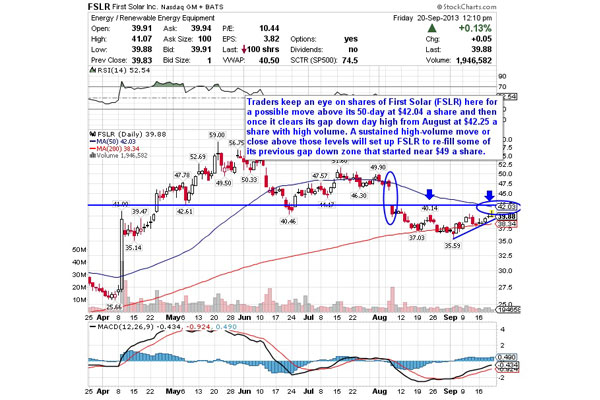
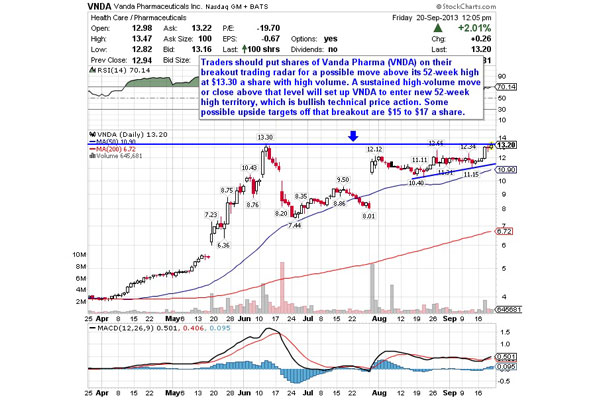
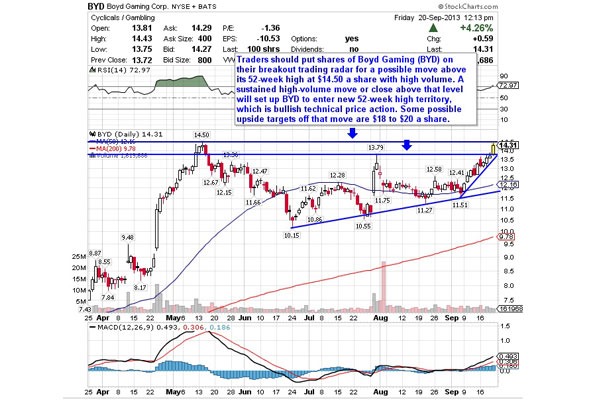
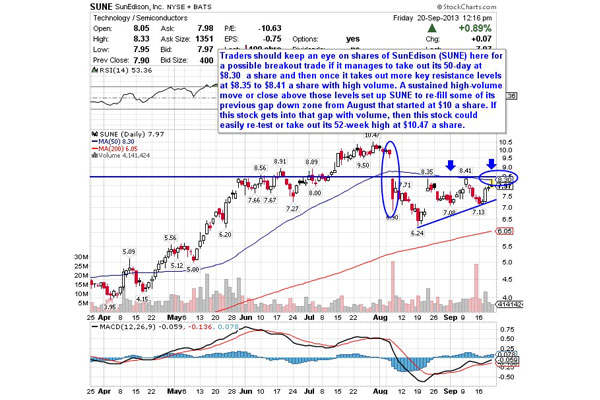
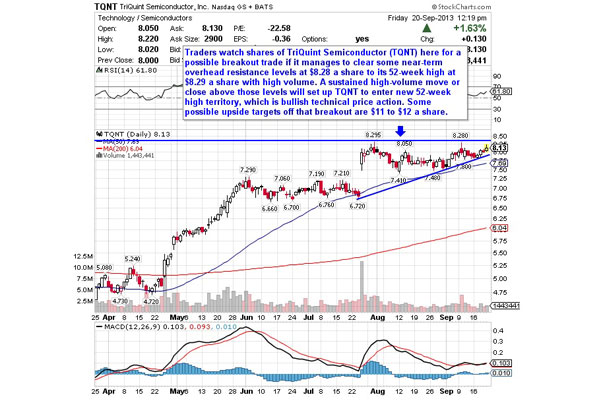



 ) reported on Thursday that it is now predicting demand for 5,580 new airplanes in China over the next 20 years.
) reported on Thursday that it is now predicting demand for 5,580 new airplanes in China over the next 20 years.